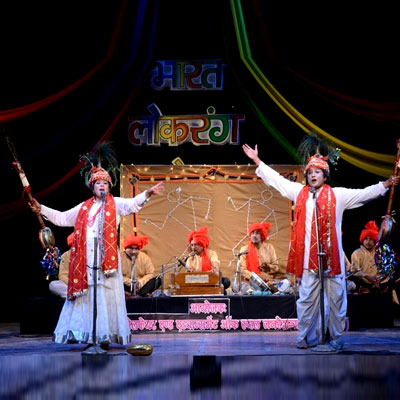Exploring the Theatrical Art Forms of Rajasthan: A Vibrant Tapestry of Tradition and Heritage"

Rajasthan, the Land of Royals, offers a vibrant exploration of traditions and cultural heritage through its theatrical art forms. The folk dramas of Rajasthan, primarily preserved and propagated by tribal communities, provide a rich tapestry of the state's cultural history.
Unique Theatrical Performances of Rajasthan
Each region in Rajasthan boasts its own unique style of theatrical performance. Among these, Khayal stands out as the most renowned, accompanied by other forms such as Rammat, Swang, Phad, Bhavai, Gavari, and others.
Popular Folk Drama Forms
Khayal
Since the 18th century, Khayal has been celebrated as a premier form of folk drama in Rajasthan, vividly bringing to life various mythological stories and characters from India's storied past. This art form is widespread across Rajasthan, with regional variations known by names like Shekawati Khayal and Jaipuri Khayal.
Tamasha
Originating in Jaipur, Tamasha is a dance-drama that incorporates extensive singing and poetic dialogue. It vividly portrays popular episodes from Hindu epics. Historically, performances took place in open-air theaters known as Akhadas, where artists faced the challenge of engaging audiences without the aid of modern amplification.
Swang
Swang, a versatile and expressive form of Rajasthani folk drama, has been performed since the 15th century. The key actor, known as Behrupriya, skillfully uses a combination of song, dialogue, dance, and mimicry to convey messages. These performances draw upon historic texts written in the Braj language.
Raas Leela
Centered around the life of Lord Krishna, Raas Leela features engaging stories enacted by a lead performer called Raasdhar. The drama includes both solo and group dances, enhanced by recitations, chanting, and a variety of musical instruments. Its interactive nature often encourages audience participation, creating a festive atmosphere.
Rammat
Popular in the Bikaner and Jaisalmer regions, Rammat emerged around 1880. Featuring instruments like the Nagada and Dholak, its themes often relate to the rainy season, Lavani dance, and Ganapati Vandana.
Finally Rajasthan's rich tapestry of theatre, culture, traditions, history, and architecture continues to enchant with its distinctiveness. These performances not only entertain but also offer a glimpse into the cultural and historical essence of the region.
FAQs
What is Khayal in Rajasthani folk drama?
Khayal is a premier form of folk drama in Rajasthan, celebrated since the 18th century, known for its vivid portrayal of mythological stories and characters.
Where did the Tamasha dance-drama originate?
Tamasha originated in Jaipur, Rajasthan, and is known for its extensive singing, poetic dialogue, and portrayal of episodes from Hindu epics.
Who is the key actor in Swang performances?
The key actor in Swang performances is known as Behrupriya, who uses song, dialogue, dance, and mimicry to convey messages.
What themes are commonly depicted in Raas Leela?
Raas Leela commonly depicts stories centered around the life of Lord Krishna, featuring solo and group dances, recitations, and musical instruments.
What instruments are used in Rammat folk drama?
Instruments used in Rammat folk drama include the Nagada and Dholak, with themes often related to the rainy season, Lavani dance, and Ganapati Vandana.